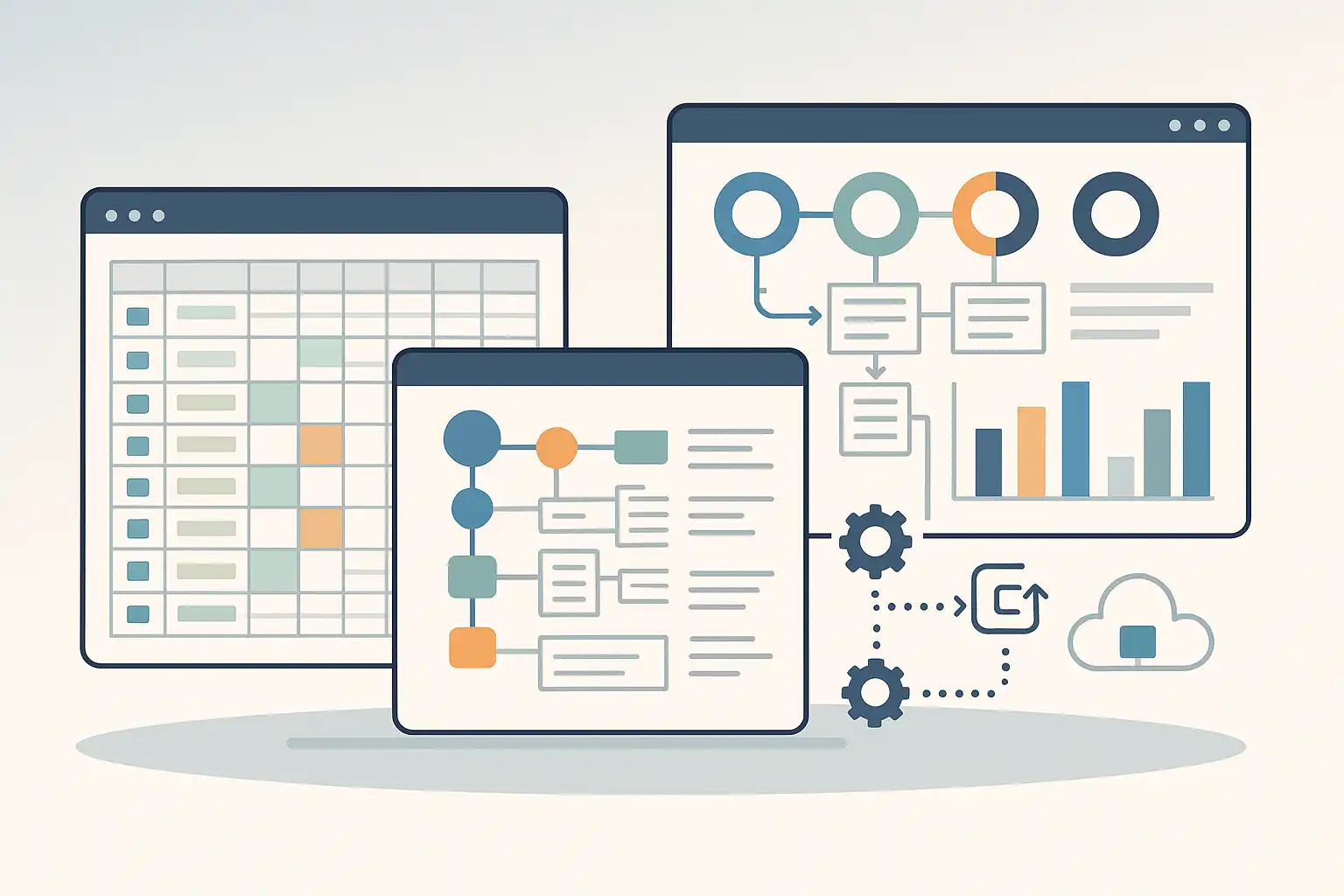
Data quality assessment forms are essential tools for making sure your organization’s information is accurate, reliable, and ready to support decision-making. But what do these forms look like—and how do you start using them? In this guide, you’ll discover the key components of effective forms, see examples you can apply right away, and find out how to make them work for your team, even if you’re new to data quality management.
What are data quality assessment forms, and why do they matter?
A data quality assessment form is a structured document or digital template that helps you check, record, and track the quality of your data across several important dimensions. You might use one to assess accuracy, completeness, consistency, validity, timeliness, uniqueness, and data integrity. Each form helps you evaluate specific aspects—so you always know where your data stands.
For example, if your team collects customer information, you can use a data quality assessment form to confirm customer records are up to date, free from errors, and consistent across systems. This is not only important for business operations, but also for compliance and customer trust.

What should a good data quality assessment form include?
The best forms share key elements, no matter your industry. Here’s what to look for in an effective data quality assessment form:
- Clearly defined dimensions: For each dataset, check for accuracy, completeness, timeliness, consistency, validity, integrity, and uniqueness.
- Specific quality checks: List detailed rules or scorecard criteria to measure how well the data meets your standards.
- Issue management: Include fields to log detected problems, describe their root causes, and assign accountability.
- Quality metrics tracking: Document scores or results for each dimension, so you can visualize trends over time.
- Automation and version control: Use features or integrations that allow quality checks to run automatically and support tracking data changes. This might mean connecting with tools such as Great Expectations, Deequ, or lakeFS.
- Compliance and metadata: Make space to record the context of your data, such as origins, regulatory requirements, and relevant data governance policies.
If your organization already uses digital tools or spreadsheets, templates can be created for each team or data pipeline. That way, assessing new batches of data becomes routine and efficient.
How do I choose the right data quality assessment form for my organization?
To find or design the right form, start by identifying your business objectives. What data is most important to your work? For example, an insurance company may focus on customer records, while a retailer might track inventory data. Map these needs to specific data quality dimensions—the points that matter most to your goals and industry.
- List your critical datasets and the decisions they support.
- For each set, select which dimensions (accuracy, completeness, etc.) are most relevant.
- Choose or design a form that asks the right questions for those dimensions.
- Decide how often to assess your data (daily, weekly, monthly), depending on how frequently data changes.
- Integrate the forms into your data workflow, either as spreadsheets, digital forms, or using automated quality assessment tools.
If you are new to these forms, start simple. For example, a basic spreadsheet might list customer names, contact details, and a column to check for accuracy. Over time, build out additional columns for uniqueness, completeness, and so on. As your needs evolve, look into automated tools that can run these checks on large datasets without manual work.
What are some best practices for implementing data quality assessment forms?
Success with data quality assessment forms depends on more than just picking a template. Here are proven best practices for lasting impact:
- Align forms with your data governance strategy: Make sure your forms support existing rules and processes. For instance, if your company has a data governance strategy in place, forms should reflect those standards for accountability, privacy, and maintenance.
- Choose standard dimensions (or customize as needed): Use common quality criteria where possible, but feel free to tailor forms for your line of business.
- Embed automation: Automate repetitive checks using tools like Great Expectations or Deequ, which can scan databases for errors and fill in the form fields. This reduces manual work and errors.
- Support issue management: Include sections in your forms for logging problems, root cause analysis, and action tracking.
- Utilize metadata: Add fields for data source, collection time, and related policies, so you always know where your data comes from and why it matters.
- Update forms regularly: Schedule reviews to adjust your forms as your data pipelines, business goals, or regulations change.
- Train your team: Provide simple guidance or training so everyone understands how and why to use the forms.
Organizations that follow these tips make data quality part of their culture, instead of a one-time effort. This way, they spot problems early and avoid costly surprises.
How can automated tools enhance your data quality assessment forms?
Manual data quality checks can be time-consuming and prone to error, especially with large or fast-changing datasets. Automated tools provide a way to streamline the process. For instance, cloud-based solutions like Great Expectations and Deequ allow you to define rules and run tests automatically, creating digital logs as you go. This not only saves time but ensures consistency in how data is assessed. Another helpful tool, lakeFS, provides version control for your datasets, so you can roll back changes or branch your data workflows as needed—much like developers do with software. By integrating forms with these solutions, you move from static checklists to dynamic, self-improving assessment systems.
For organizations wondering about the business impact, it’s worth noting that consistent use of assessment forms and automation leads directly to more trustworthy analytics and better decisions. In fact, research shows that poor data quality can cost businesses up to 20% of their revenue, making regular assessments a smart investment.
Managing costs while improving quality can feel challenging, especially as data volumes grow. If you’re assessing whether to build internal capabilities or outsource some functions, considering factors such as resource availability and your organization’s unique needs is critical. In many cases, evaluating outsourcing data management cost quality can help you find a balance between efficiency and control.

What kinds of forms and templates are available right now?
You can find many ready-to-use data quality assessment forms and templates online, ranging from simple spreadsheets to advanced, automated dashboards. Here are a few types you’ll encounter:
- Basic spreadsheet forms: Ideal for small teams or pilot projects, with hand-entered checks for accuracy, timeliness, and other dimensions.
- Automated digital forms: Built using no-code or low-code platforms, allowing for dropdowns, scoring, and automatic metrics calculation as data is entered or updated.
- Data pipeline integration: Forms or routines embedded directly into your data processing tools (for example, scripts in Python or SQL) that assess and flag issues as soon as new data arrives.
- Enterprise platforms: Comprehensive tools such as Informatica Data Quality, Talend Data Quality, and open-source projects like Great Expectations or Deequ, which provide prebuilt forms for a wide range of use cases and integrate with your existing data repositories.
Most companies start simple and add complexity as their needs grow. The key is to adapt the form to your workflow, not the other way around. That ensures adoption and long-term success.
How do I get started with data quality assessment forms today?
Begin by selecting one critical dataset—perhaps your customer table or product inventory—and identify which dimensions matter most. Download a basic spreadsheet template or build your own with columns for each quality dimension, a score or pass/fail field, and notes for issues found. Run through a sample batch of data. What did you discover? Where did issues pop up? Discuss findings as a team and refine your form for next time.
As you become more comfortable, explore automation tools to make the process faster and more reliable. Many platforms provide starter templates, which you can adapt to your needs. Over time, integrate your assessment forms into routine business processes so data quality becomes second nature across your organization.
FAQ: Answers to Common Questions
- Do I need special software to use data quality assessment forms?
No—simple spreadsheet tools work for many use cases. As your data grows, consider specialized tools like Great Expectations, Deequ, or enterprise solutions for automation and scale. - How often should I review my data quality?
It depends on how often your data changes and its importance to business decisions. Daily or weekly reviews are common for critical data, while monthly checks may work for less urgent cases. - What if my organization has unique compliance or privacy needs?
Customizing your forms to capture extra details—such as data source, consent status, and regulatory requirements—will help maintain compliance and make audits easier. - How do I measure improvement in data quality over time?
Track key metrics from your assessment forms and compare them over time. Improved scores, fewer issues, and faster resolution all signal better data quality.
